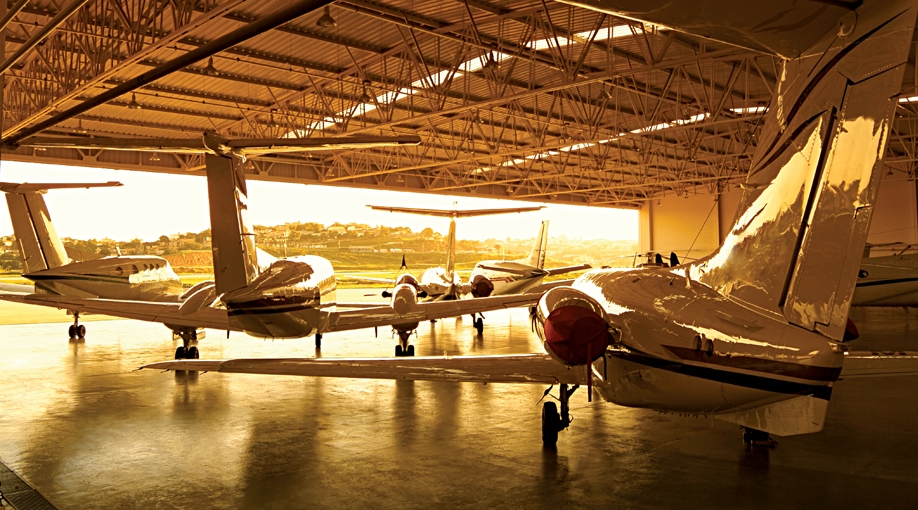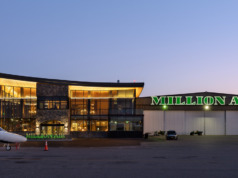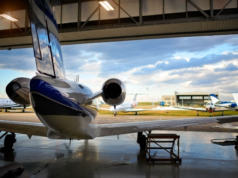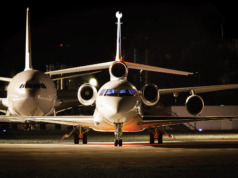
For most of the last sixty years, light jets dominated new business jet deliveries, followed by midsize aircraft, with large-cabin aircraft reserved for the few requiring intercontinental reach. That is no longer so, as growing global demand for super-midsize and ultra-long range aircraft drives the nascent industry recovery. Bombardier, Cessna, Dassault, Embraer, and Gulfstream are responding by introducing a new generation of exciting and capable aircraft with one thing in common: the newest aircraft are bigger — much bigger.
During the next decade, large-cabin aircraft will be the fastest growing segment, representing 24% of all new jet deliveries, according to Bombardier. Honeywell pegs the combined super-midsize through ultra-long range at 60% of all new deliveries. That’s more than 5,500 new aircraft, valued at almost $200 billion.
Within the next two years, as proud owners begin taking delivery of these new aircraft, they will face an unprecedented challenge: where to hangar their high-value capital asset.
Owners and financiers — who have invested considerable sums for acquisition — rightly expect that these assets not only will be operated safely and responsibly, but also that they will be stored in facilities that are safe, clean, and protected from the elements.
If you are one of those proud new owners, you will want your aircraft proximate and accessible: after all, time and convenience are the driving reasons to own an airplane. But the available hangar space sufficient to house these larger aircraft is at a premium at many airports, particularly those in major metropolitan areas. Land is a finite resource: so you can expect competition — and higher prices — for those desirable slots.
Lest you think that your FBO or aircraft management company may be taking advantage of you, understand that hangars which once held six or seven airplanes now may have a capacity of only three larger aircraft. The new Gulfstream 650 is slightly more than 99 feet both in length and in wing span, as compared with the G450’s 88-foot length and 79-foot wingspan — a 41% increase in area. Bombardier’s new Global 7000 sports a 111-foot length and 104-foot wingspan, and Embraer’s Lineage is 119 feet long with a 94-foot span.
- Hangar expenses — land lease rates, utilities, labor, and upkeep — are not decreasing, so your FBO or aircraft management company must do their best to meet your budget requirements, and still run a responsible business. The result? You can expect your hangar rent to rise by more than just 10% to 15%. Your large aircraft likely will be displacing two or more smaller aircraft.
If you prefer not to pay significantly higher hangar rent, you can move your airplane to a more remote airfield, where hangars are available and less expensive. You then have three options to reach your aircraft: - Positioning — Your aircraft can be ferried to your preferred departure point before and after each trip. This option brings its own set of financial and operational challenges: incremental fuel burn and additional time and cycles, which create wear and tear on the airplane thus raising costs. From an operational standpoint, positioning flights will have a direct impact on crew duty time, reducing the amount of duty time your crew is available to fly your planned trip. And positioning the night before may not be feasible in winter weather or if pre-flight maintenance is required.
- Driving — You can spend time driving to and from the new location. While the most cost effective, this option reduces the time-saving aspect of owning a business jet.
- Using a Helicopter — Traveling by helicopter to and from your new aircraft base, while more expensive, also is more convenient. You might be able to fly directly from your office building, rather than from a heliport or airport.
Your future travel aboard large-cabin aircraft will require more planning, allow for fewer last-minute changes, and be more costly. Advance planning will help you manage your expectations and your budget, and insure that your aircraft remains an effective business tool. BAA
William Beversluis is VP Aircraft Management for Jet Aviation Flight Services. A 6,000 hour Airline Transport Rated pilot, he previously served as a Fortune 100 flight department manager, as well as sales manager for Gulfstream and Pilatus.




